Landscaping with roses: 9 expert ways to use these blooms in your space
Our top tips on landscaping with roses reveal how to achieve the most amazing planting schemes in your own garden


From formal layouts to relaxed cottage styles, landscaping with roses covers a whole range of different looks for your garden. One thing they will all have in common, however, are unrivalled displays of stunning flowers which ooze romance.
Having the knowledge of where to position roses and which varieties to use for getting just the right look you're after is key. Not to mention knowing how to train them correctly in order to create the much-coveted sweeping arches or pergolas encased in rambling roses.
Roses have such a rich history in gardens, both domestic and public, and perhaps none understand this better than the custodians of heritage sites that contain rose gardens which have been tended for decades and even centuries.
So I approached three experienced gardeners, who all care for famous rose gardens, for their sage advice on how to create stunning landscaping ideas using roses.
Introduce romantic charm with these techniques for landscaping with roses
Once you know how to grow roses, chances are you'll want to discover as many ways as possible to introduce these stunning blooms into your plot.
To get you inspired, we asked several National Trust gardeners for their expert tips. Jade Wall, who tends Morden Hall Park; Mike Buffin, Head Gardener at Mount Stewart and Jenny Windsor, Senior Gardener at Peckover House, are all experienced at landscaping with roses and have imparted their wisdom to help you achieve an expert look in your own garden.
1. Create an informal landscaped look
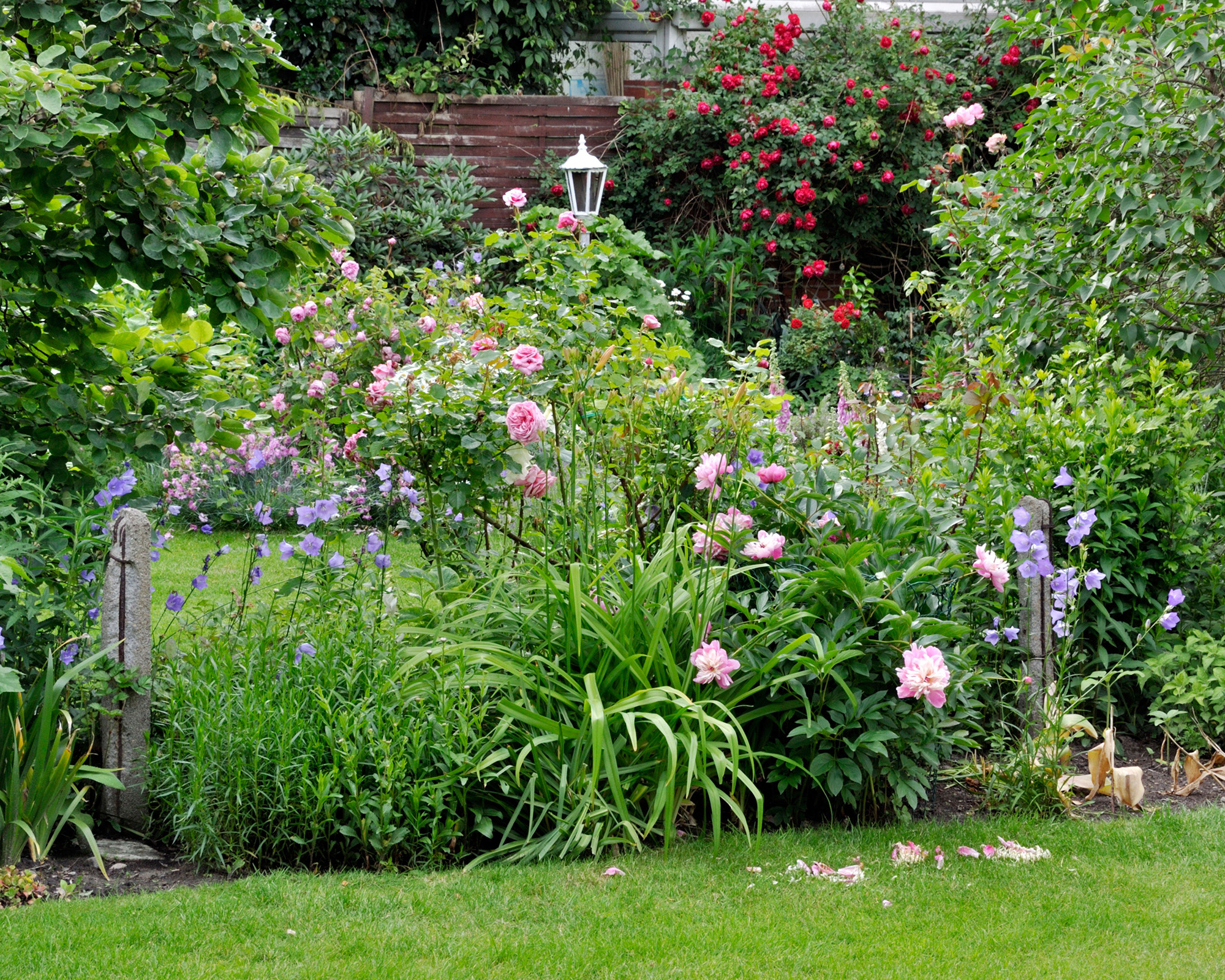
For those of us who are fans of more fluid, organic looking backyard landscaping, roses can be used to achieve an informal look.
Mike Buffin, Head Gardener at Mount Stewart believes that in order to create an informal rose garden you need a real variety of roses with different heights, forms and colors which are mixed in with free flowering herbaceous perennials.
'The trick to this is to randomly plant the roses so they don’t all look like they are in lines and mix the varieties up, so the border isn’t dominated by a single color,' says Mike. 'Then interplant the gaps between the roses with herbaceous perennials and summer bulbs. Let the bulbs and herbaceous plants seed themselves around.'
Jade Wall, gardener at Morden Hall Park also likes an informal look. 'One of our favorite flower beds in the park is our left-overs bed, where we plant any roses that we might have over-ordered for the formal gardens,' says Jade. 'Here roses of all colors and shapes compete with lush herbaceous flowers like cranesbill geraniums, day lilies and poppies, and although it sounds like chaos, the effect is extremely pleasing.'
2. Train rose stems to grow horizontally

A rose arch, teeming with blousy blooms is a sight which many of us would like to see in our own gardens. And it's achieved by knowing how to prune roses in a certain way and by training your stems to grow at a horizontal angle.
'By laying or bending the stems of a rose at a horizontal angle you overcome what is called the Apical Dominance of the plant where all the growth hormones in the plant want to get to the top,' explains Jade Wall.
'By laying the stems you force this growth hormone to travel along the stems rather than up which helps to burst the buds along the stem creating more flowering points on the rose. This is commonly done on rambling and climbing roses but can be achieved with creative pruning, pinning and sculpting on shrub roses.
'The best known of these practices is The Sissinghurst Prune where lax stems are bent back to the ground and tied to stakes to force flowers to break along the length of the stems in summer.'
3. Go for a formal layout for your landscaping
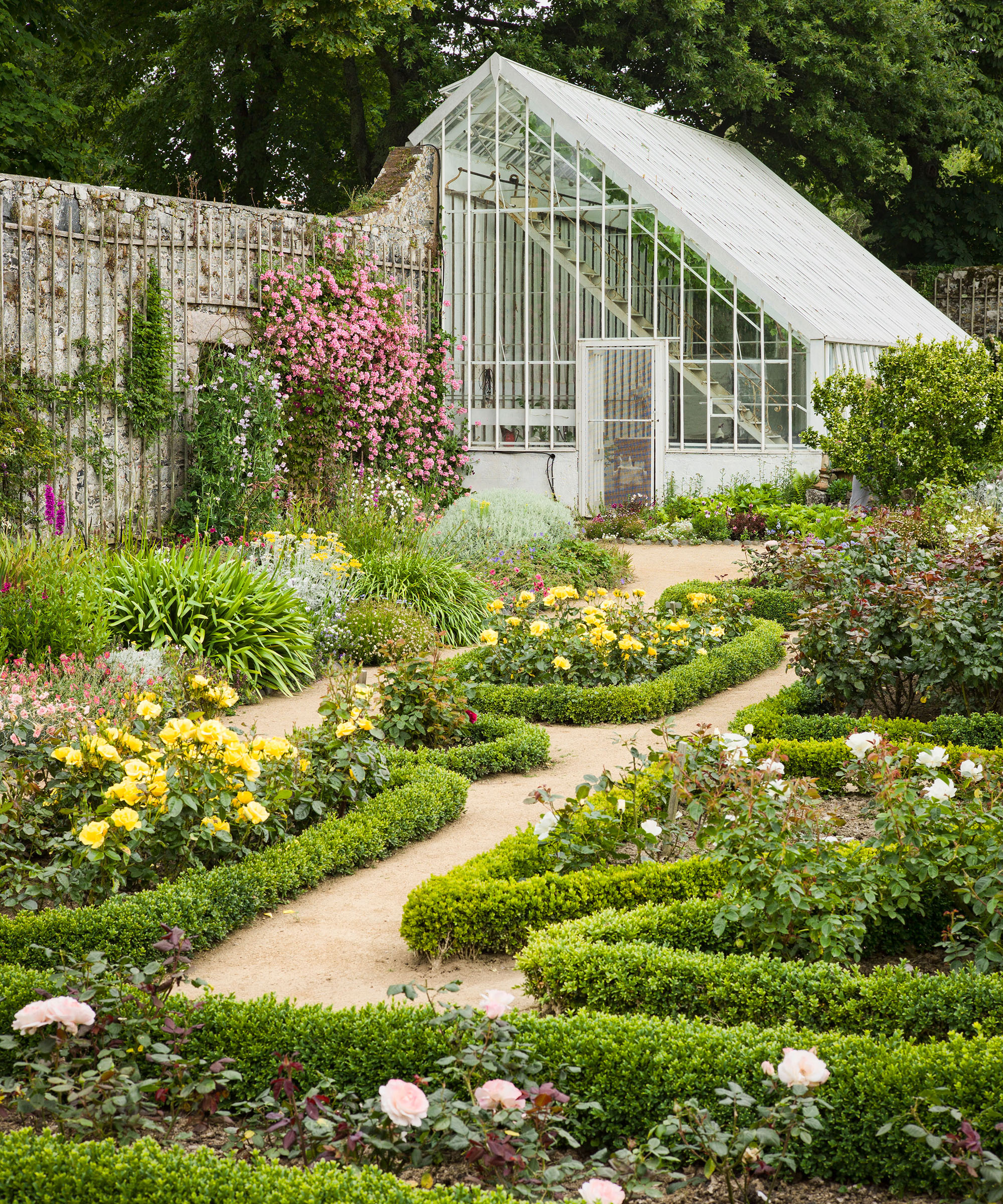
At Morden Hall Park, Jade Wall and her team look after a 100-year-old formal rose garden. Generally speaking, a formal rose garden design would see different varieties kept separate. This is how Jade and her team keeps their landscaping with roses formal too. 'We only plant roses of a single variety in a bed with no underplanting of herbaceous or annual flowers.'
To get a formal layout her roses are planted in a diamond pattern to help fill the beds but also to give a sense of uniformity. 'We try to form blocks of color and varying heights to suggest movement and space throughout the garden,' she says.
Mike Buffin achieves a formal look by grouping roses of a single color together along a garden border at equal distances apart or in groups of threes or fives so that they grow to form larger groups. 'Limit the use of herbaceous plants, or use them in larger, repetitive groups,' he advises.
4. Mix roses with other plants for a cottage-style landscape
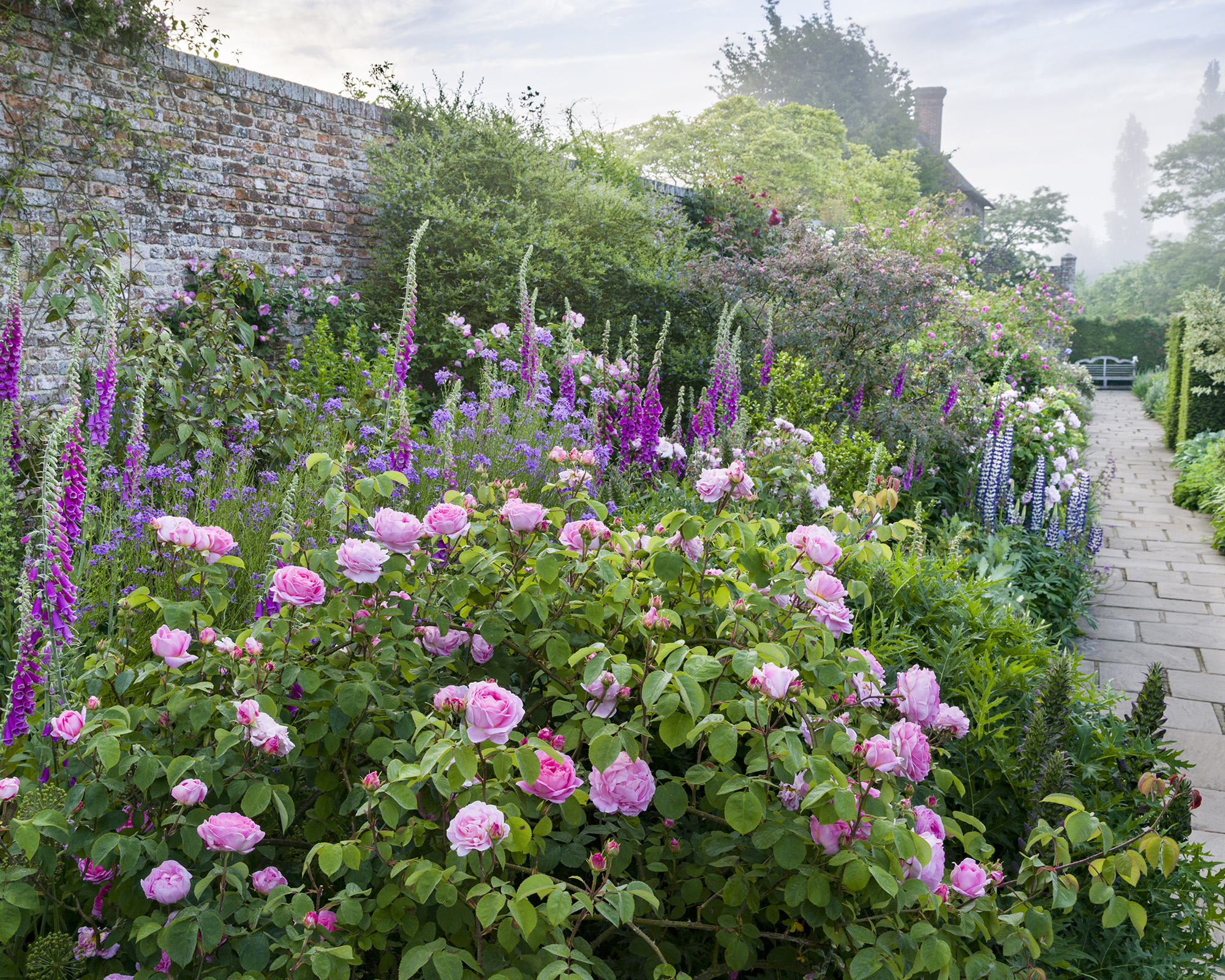
To introduce informal cottage garden ideas into your landscape, Jade Wall feels the key is to mix several varieties of repeat-flowering roses with low-growing perennials such as geraniums, salvias and alchemilla.
She also advises giving thought to a long season of color when landscaping with roses. 'I love succession planting, especially with summer flowering bulbs like lilies and the summer hyacinth, ornithogalum candicans. As for perennials, I always like incorporating coneflowers, ox-eye and Michaelmas daisies, along with catmint, as these offer a bit more in the way of later flower color.'
Jenny Windsor, Senior Gardener at Peckover House in Cambridgeshire think roses look brilliant teamed with other cottage garden plants. 'Tall spired plants are ideal, such as foxgloves and delphiniums,' she says. 'Adding lavender is meant to help reduce rose diseases too.'
5. Bring more than one rose variety into your scheme

Jade Wall prefers planting different types of roses in one landscape, as it produces more of a relaxed planting scheme, but there are a few hard and fast rules depending on your taste.
'Remember to drift plant the roses so that they add color and scent in succession to the other plants nearby, and in my experience avoid shady spots as roses generally love the sun,' she says.
'Contrasting colors like buff yellows and oranges mixed with pale blues and deep purples really make the flowers stand out. Picking roses that flower at slightly different or overlapping times can also be a plus too as it changes the character of the bed throughout summer.'
Mixing together different colors and styles of plants can be equally effective when landscaping with grasses too.
6. Create a pretty landscape with roses in containers
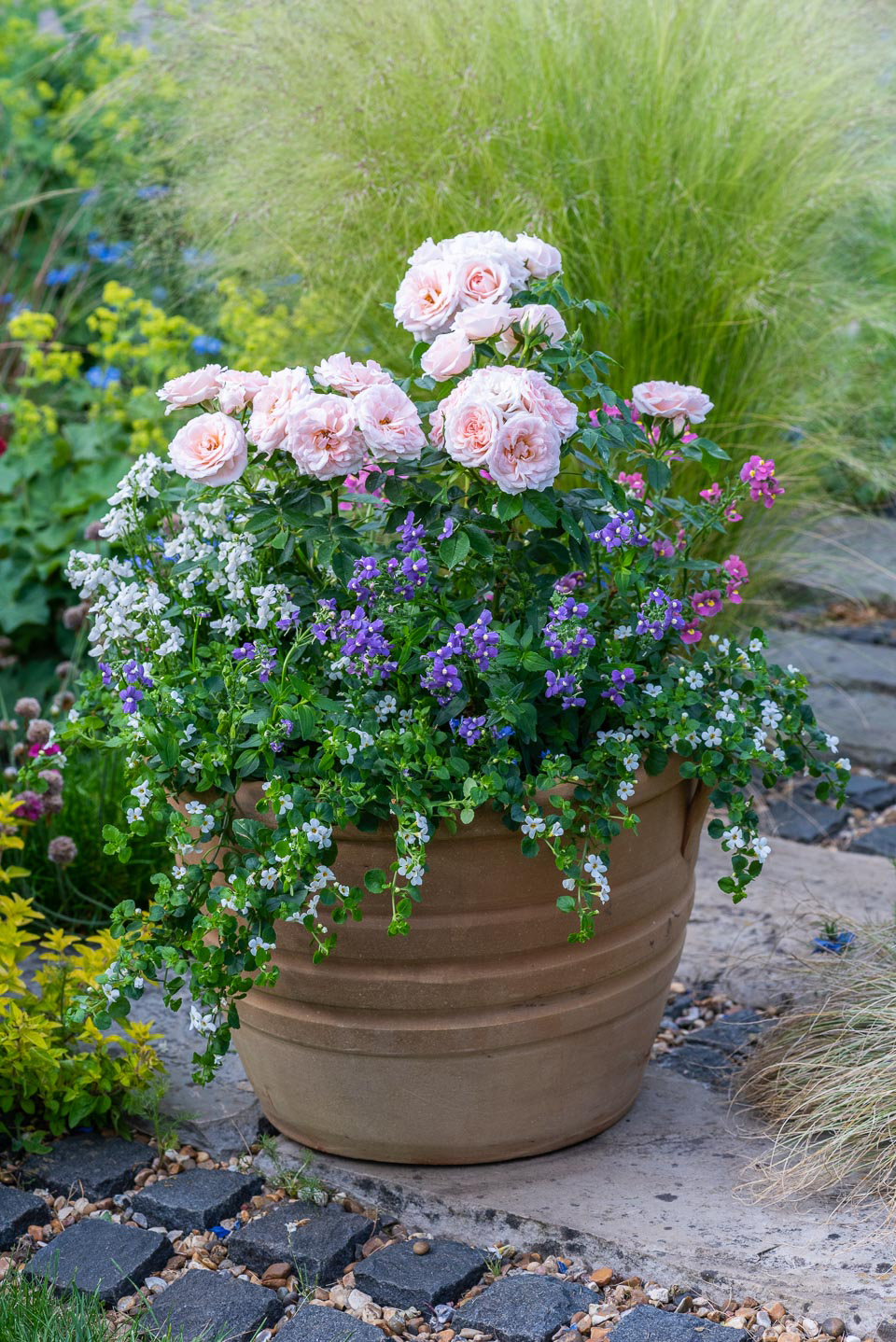
For small gardens and patios it's possible to bring roses to your scheme by growing them in pots. 'There are so many good roses to choose from for container gardening ideas, but I am going to stick to the patio or ground cover types, as by their very nature they are low growing and very tough, and almost impossible to kill,' says Mike Buffin.
For the garden planter itself Mike favors clay as they will regulate the heat and cold better than other types. If you want a bit more dazzle, he advises mixing up some different colored roses in the same large container. 'Mix up some of the bolder colors like Rosa ‘Sweet Dream’ (orange compact flowers), Rosa ‘Bianco’ (white with a pale yellow centre) and Rosa ‘Bright Smile’ (yellow fading to white).
'These would quickly fill a large terracotta pot and the blooms would grow through each other and trail over the sides of the pot and look like a giant cascading bouquet.'
Container gardening is a great option if you're thinking of landscaping with hydrangeas too.
7. Incorporate roses into a seating area
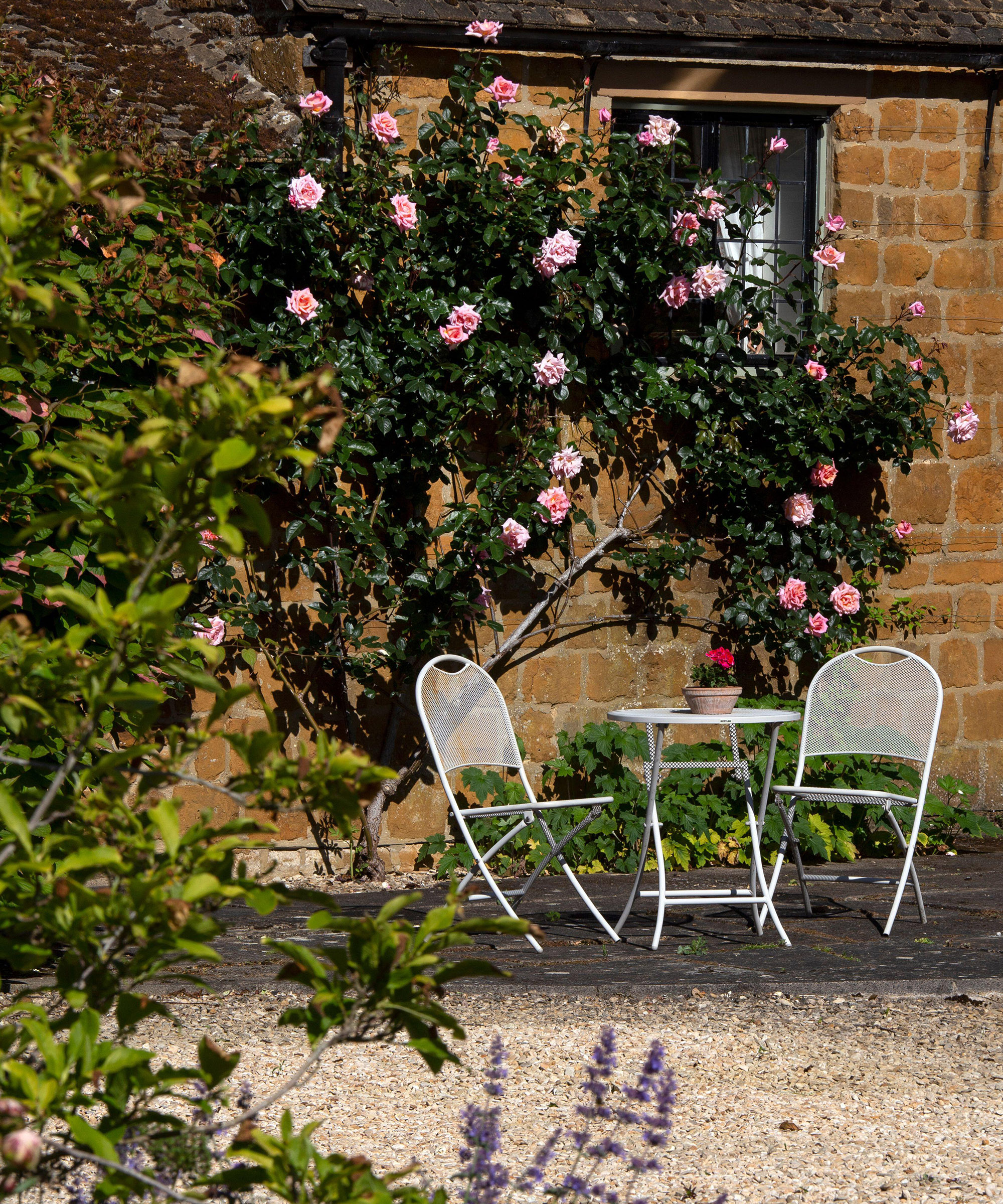
A rose with a strong perfume is the perfect fit for landscaping around a seating area or for creating a tucked away nook to hide away.
Jenny Windsor has a favorite rose to bring into a seating area: 'Rosa Adelaide D’Orleans is perfect for training and growing over pergolas and trellis. The delicate white flowers hang with perfect poise and scent the whole area.'
Mike Buffin has a different method, aside from the traditional rose arch or pergola idea, for growing climbing or rambling roses in a seating area. 'I’m also a fan of growing roses up a wooden post 2 or 2.5m high and running a sisal rope between to create a post and rose swag effect,' he says.
'One of my all time favorite roses for this is Rosa ‘Constance Spry’ with its pale pink, highly scented flowers during the height of summer. Although it only blooms once, you can use the rose as a climbing frame for annual sweet peas too.'
8. Create a ring of rose-covered arches
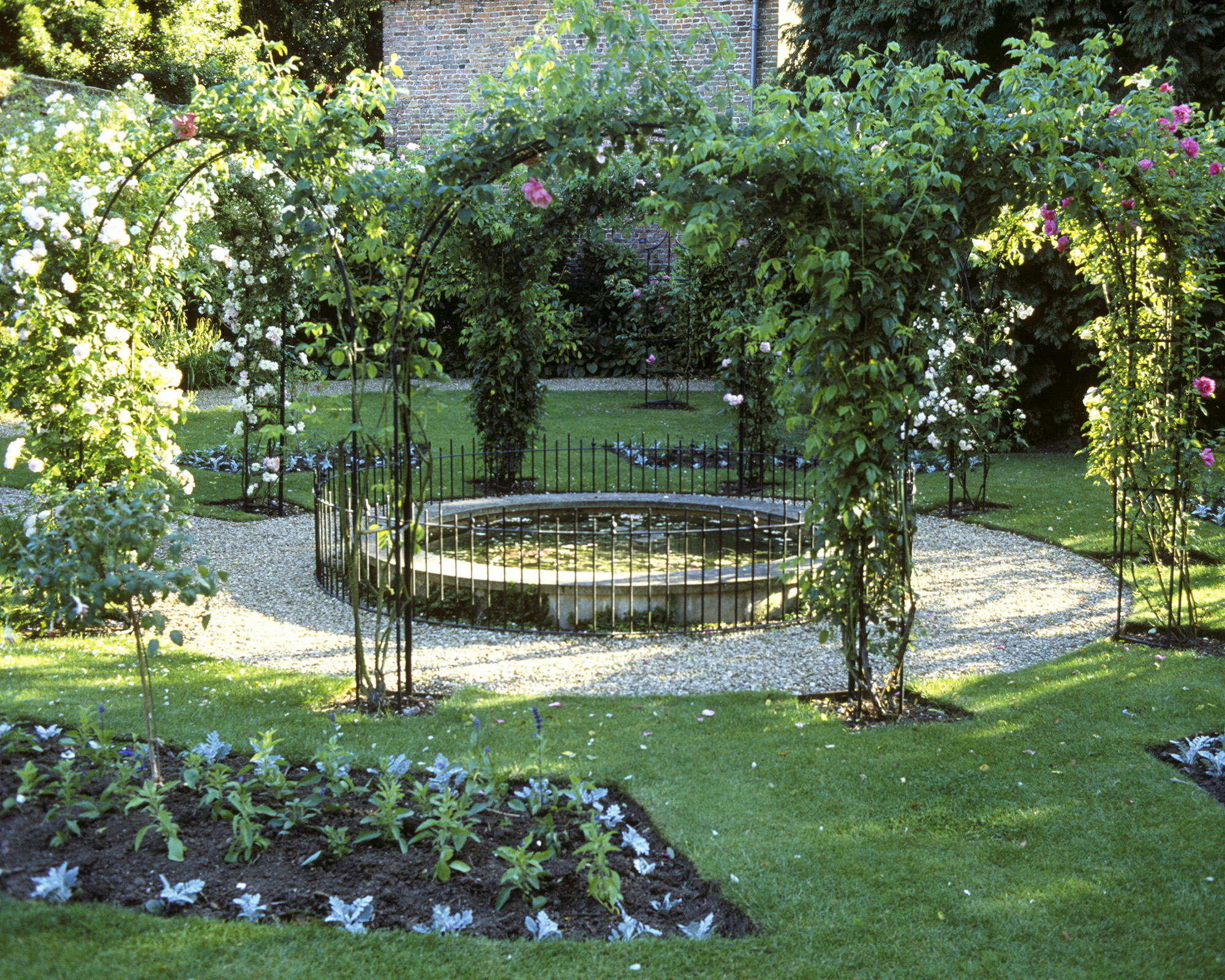
If you have space for more than one arch then you could use them to form a circular shape like the arches at Peckover House. 'We have seating in a summer house that looks onto a ring of arches, which on a warm day amplifies the heady scents of the roses that can be enjoyed as you look out onto them,' says Jenny Windsor.
If you're searching for cheap landscaping ideas and this look is beyond your budget, you can create an equally effective scheme using multiple arches along a garden path to create a tunnel of roses. A simple wooden structure for plants to grow up and over is fairly easy to make on a DIY basis, while painting the timber a dark color will allow the rose blooms to stand out. Plant them up with different colored roses for a playful scheme or one variety for serious impact.
9. Encase a bench in blooms

Landscaping with shrubs is a brilliant way to transform a sunny spot next to a garden boundary, turning it into a secluded seating area like this one at Peckover House. They have a Victorian iron garden bench positioned under an enormous Rosa 'Garland', and when it's blooming in summer it makes it feels as though you are encased in its flower heads.
Jenny Windsor and her team encourage their blooms to grow this way by training the roses along a horizontal wire system which encourages better flower formation. Each year the side shoots are removed to one bud to create a distinct pattern along the wires, creating interest during the winter and spring months when the flowers aren't in bloom.
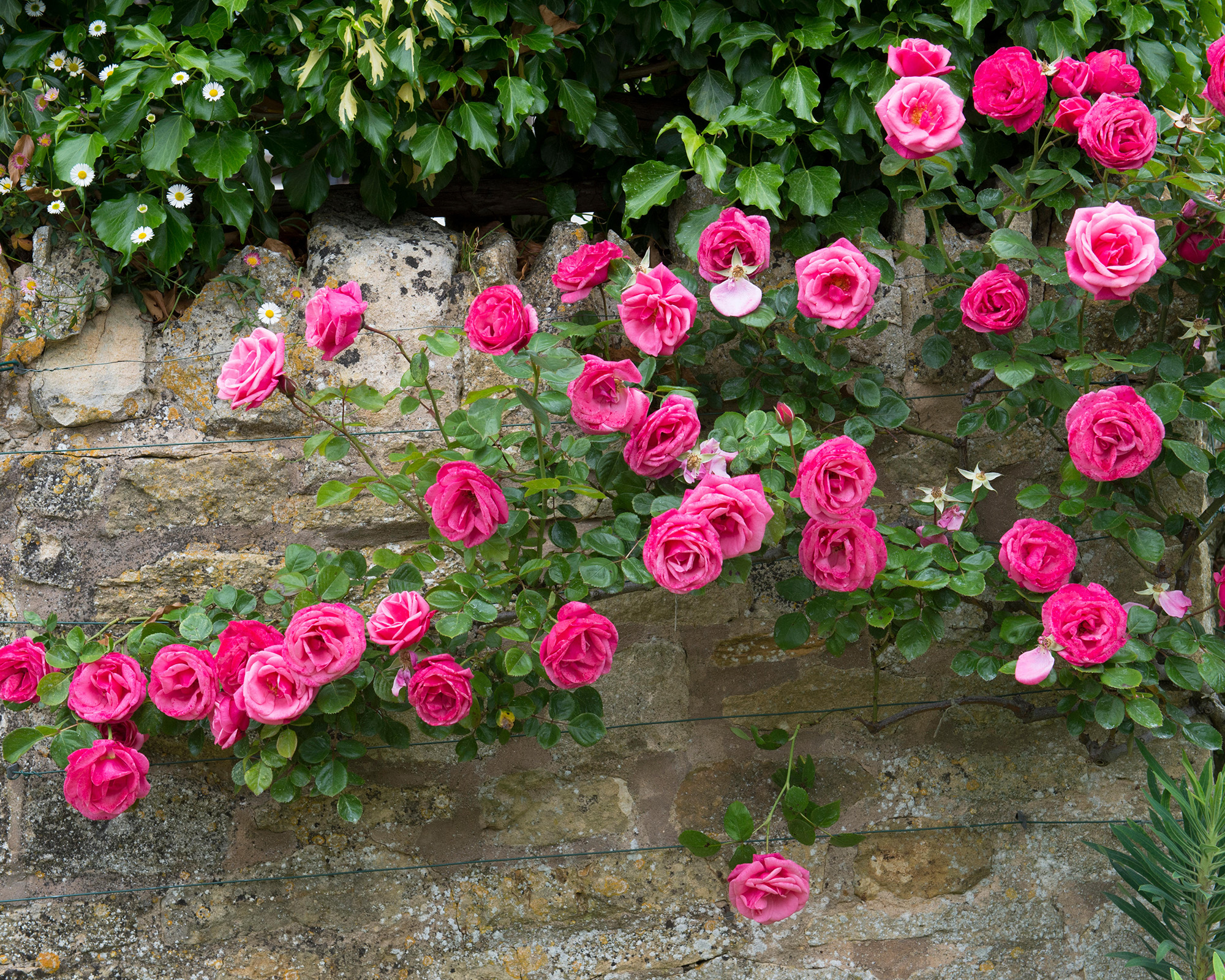
How should I arrange my rose bushes?
When landscaping with roses, you can opt for an informal layout for your rose bushes by using a mix of heights, colors and forms and by planting them alongside herbaceous perennials and summer flowering bulbs.
For a more traditional, formal layout, plant roses of a single color together along a border spaced at equal distances apart. It's also best to group your rose bushes in odd numbers in your flower bed ideas. Limit the use of other plants including flowers and shrubs, aside from perhaps a low growing hedge or lavender used as garden edging.

Teresa has worked as an Editor on a number of gardening magazines for three years now. So she is lucky enough to see and write about gardening across all sizes, budgets and abilities. She recently moved into her first home and the garden is a real project! Currently she is relishing planning her own design and planting schemes. What she is most passionate about when it comes to gardening are the positive effects it has on our mental health to grow and care for plants, as well as being great for the environment too and help provide food and shelter for wildlife.
